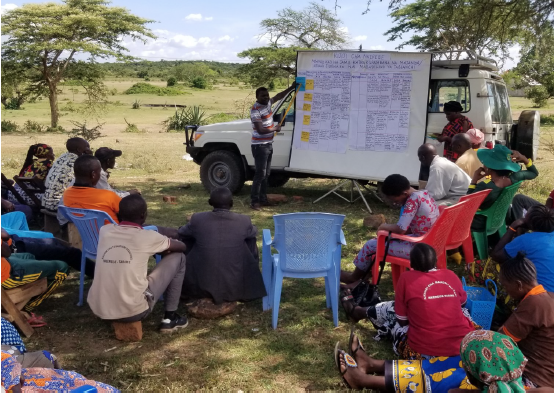The Certified Way to Organic Agriculture
.jpg)
Every year our farmers plant and harvest their fruits, vegetables, and spices, amongst other things. Their crops, once harvested, are then marketed and sold under an organic label. How can we be assured that these crops are organic? They must go under a certification process – specifically under “Kilimo Hai”.
The Certification-Production system is focused on quality assurance based on certifying producers and active participation of stakeholders to build trust and social networks, and foster knowledge exchange.

At Sustainable Agriculture Tanzania (SAT), we encourage our farmers to be certified under the Kilimo Hai Certification which is offered by Tanzania Organic Agriculture Movement (TOAM), so the farmers could access and enjoy the benefits that come along with the certification.
The certification process begins with the mobilization of farmers and the formation of groups. These groups are instructed directly by facilitators from SAT or through F2F (farmer to farmer) facilitators. Through their training, they are made familiar with organic production and good practices, as well as activities conducted by SAT in collaboration with farmers and TOAM representatives.
Afterward, the groups are sorted based on a few different criteria
- Needs of the group.
- How actively are the members participating in group activities.
- The quality of leadership portrayed by their leader.
- Marketing challenges faced by the group.
This process means grouping the farmers according to their production needs and capacity which serves as a primary point that boosts their productivity. They are then trained thoroughly on:
- Organic farming.
- Standards on Organic Farming (EAOPS) and Compliance.
- Participatory guarantee system (Peer to Peer Assessment) and how it works utilizing established committees within the groups.
- Collective marketing.
- External assessment and certification.

The certification process has attracted more farmers over time:
· In 2019 the number of certified farmers was 835 with an expectation of certifying 1245 farmers (763 spice farmers and 482 as vegetable and fruits producers) by the end of this year.
· There has been an increase in land involved in organic farming from 525.6 acres in 2019 to 1062.3 acres in 2020
All this was achieved after the farmers:
· benefitted from premium price for their products, which attracted new farmers to undergo the certification process.
· were ready to learn and spread awareness about organic agriculture.
· saw the increase in their income from the value addition on the sales of their product.
· were able to minimize the cost of production and maximize profits

Through this process, we are thereby able to continue achieving our goal of stimulating soil and environmental conservation which is our agroecological goal in practicing organic agriculture.






